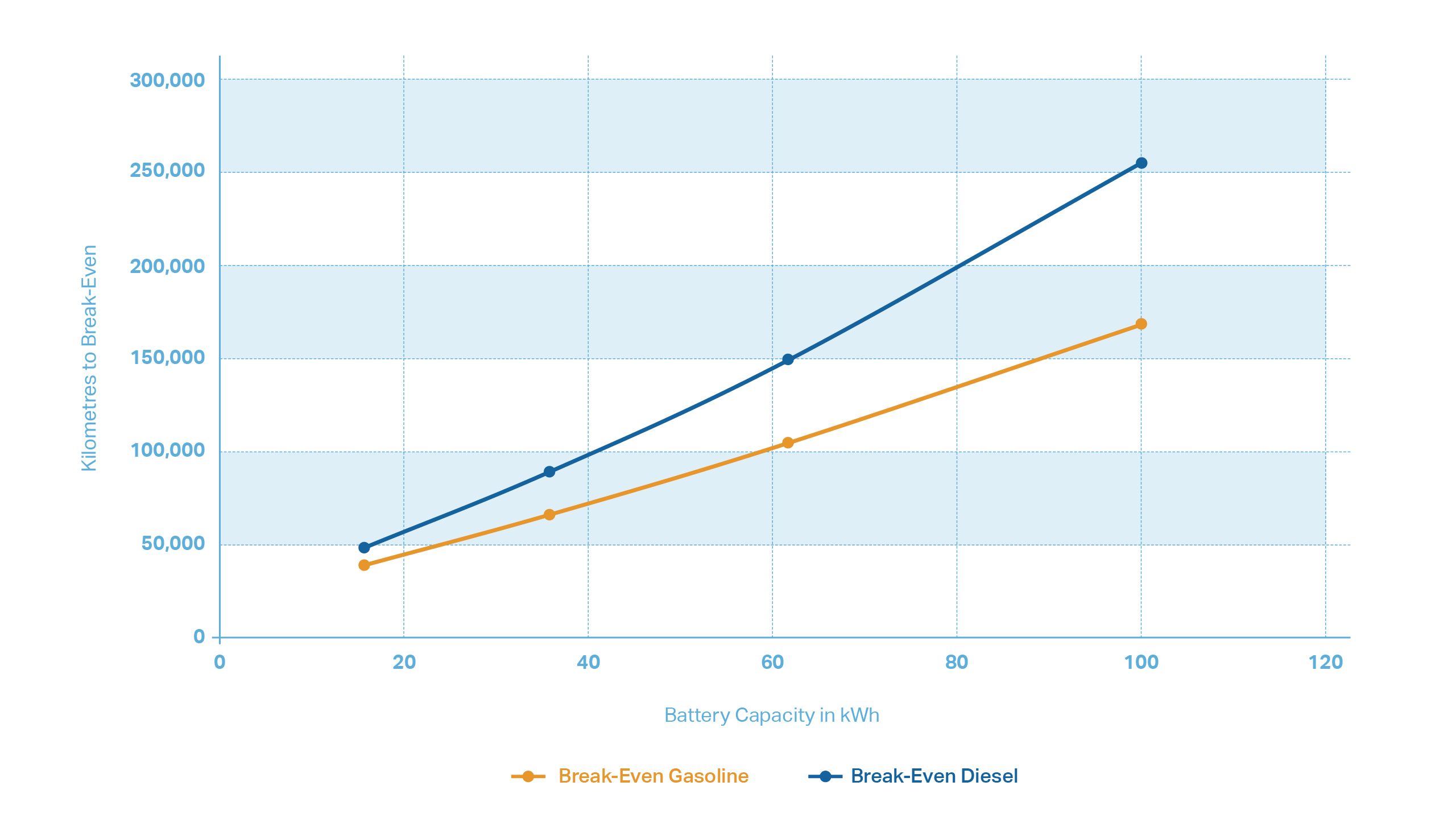Electric Vehicle Ranges: Trouble with the Carbon Footprint.
The eco-friendliness of electric vehicles, or rather their obvious harmfulness to the environment, is being reported in the press on an almost daily basis. Occasionally, they also refer to life cycle assessments. The results are sometimes great and sometimes terrible for the electric vehicle.
What matters to us is the topic of LCA and the climate goals 2050. In written texts, we present readers extracts of LCA results, or sensitivity analysis that shall inform about technical interrelations, quantify them ecologically and hopefully kick off a discussion.
For this example, we are addressing the range or battery size of electric vehicles. Both parameters are directly related; the higher the capacity of the lithium-ion battery the higher the electrical range, but also the more carbon dioxide is emitted during its manufacture. On the other hand battery size is one of the key criteria for potential buyers of electric vehicles. In short, the battery plays a key role in the environmental, as well as in the technical performance of an electric vehicle.
Looking at the figure, it is evident that greenhouse gas emissions during the manufacturing stage are significantly higher for the electric vehicle than for the vehicles with internal combustion engines. This is mainly due to the electric vehicle’s traction battery. The topic of why the CO2 emissions of the batteries are actually so high will be dealt with at a later point of time. But if we accept this fact for the moment, then it is obvious that the size of the battery, i.e. also the range of the vehicle, has a significant influence on its ecological performance.

The blue line in the use phase of the electric vehicle is much flatter than that of the combustion engine vehicle. The reason is that a significant proportion of the energy used to generate electricity within the EU already stems from renewable sources. Taking a closer look, we also notice the points of intersection A and B with conventional vehicles. Those intersections represent the points in time during the life cycle after which the electric vehicle exhibits better CO2 performance than gasoline and diesel vehicles for each additional kilometer travelled. At this point, the electric vehicle figuratively reaches the ecological break-even point. Since the level of the starting point (0km) of the electric vehicle’s blue line solely depends on the production emissions, an increase in these emissions caused by the enlargement of the battery delays the break-even point in the life cycle.
This relationship is clearly illustrated in Figure 2 below, which shows the break-even points of four electric vehicles with differently sized batteries compared with two identical vehicles powered by internal combustion engines.

For instance, the mileage at which an electric vehicle with 62 kWh battery would achieve CO2-related advantages over an equivalent petrol or diesel vehicle is 105,000 and 150,000 km respectively.
The key parameters and data used for this study are shown in Table 1 at the bottom of this article. Please note that the given figures refer to a C-segment vehicle, any actual vehicle might deviate slightly.
So the question should be permitted whether it always has to be the long range battery? Considering the low daily mileage, which averages 39 kilometers per person in Germany, for example, almost all mobility needs can be met with a 20 kWh battery.
This cannot be answered with a clear Yes or No without taking other aspects into account.
Topics like
- the charging infrastructure
- the power grid
- the increasing energy density of cathode materials
- the battery lifetime
- the charging duration and cycle stability
- the emotional appeal of the vehicle
- business models
are important parameters. We will take a closer look at some of those in future and try to shed some light on the sustainability aspects.



